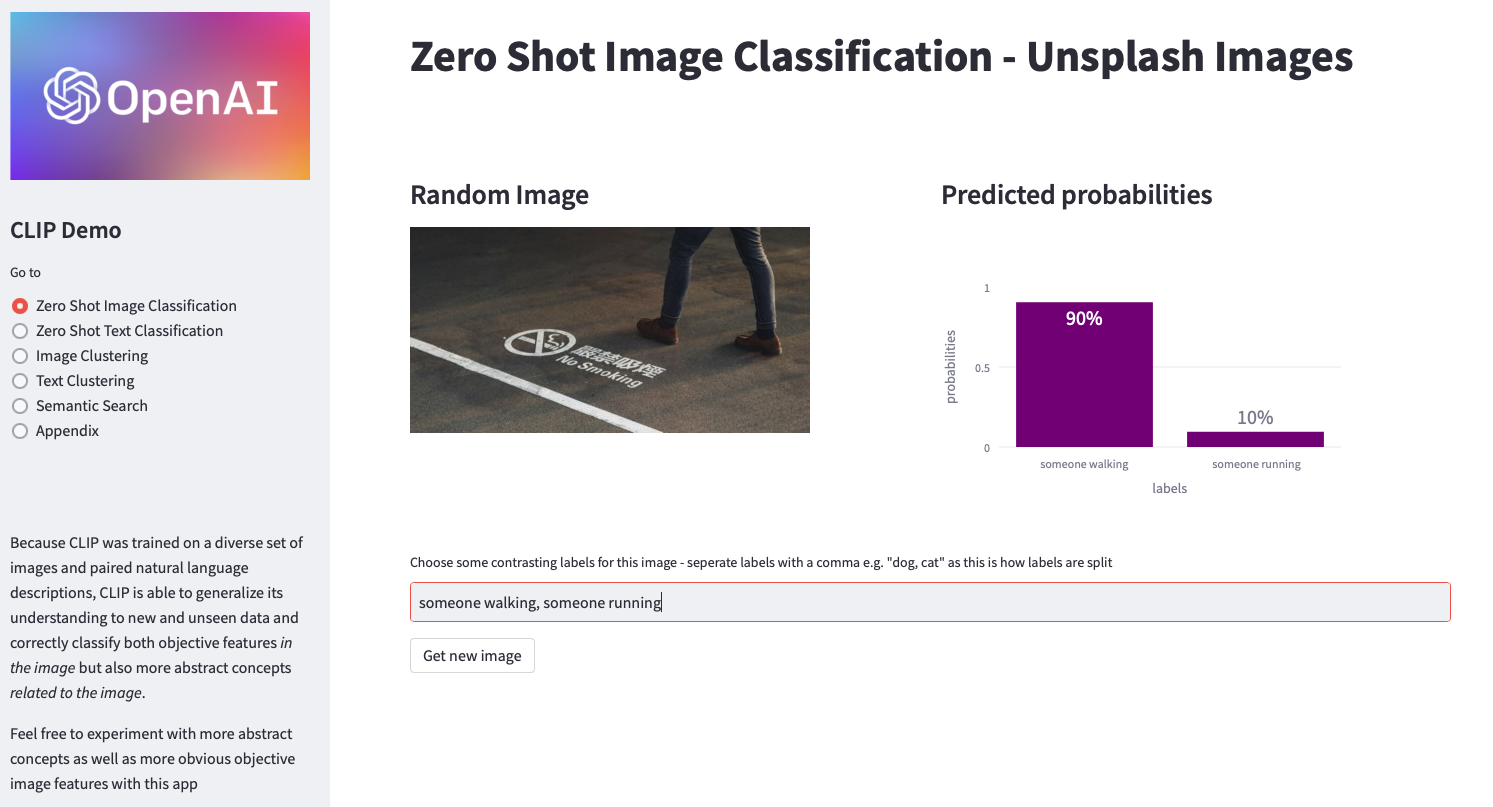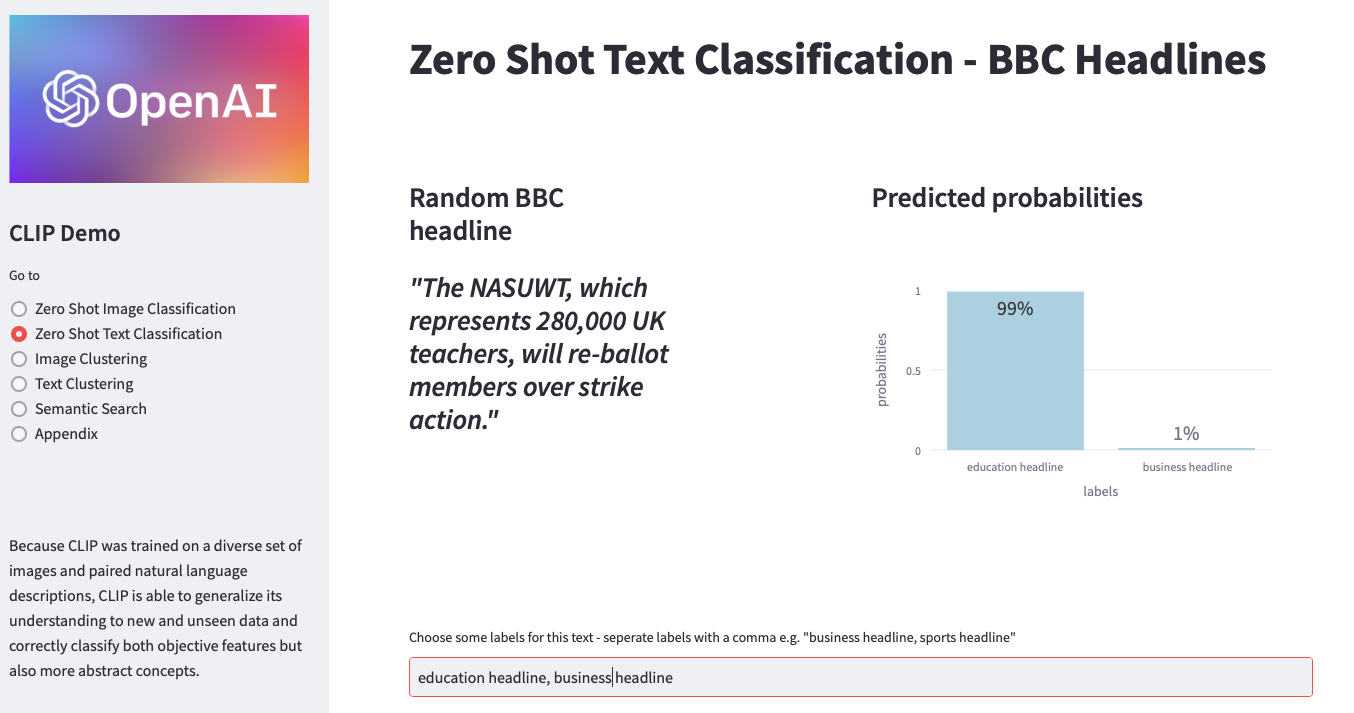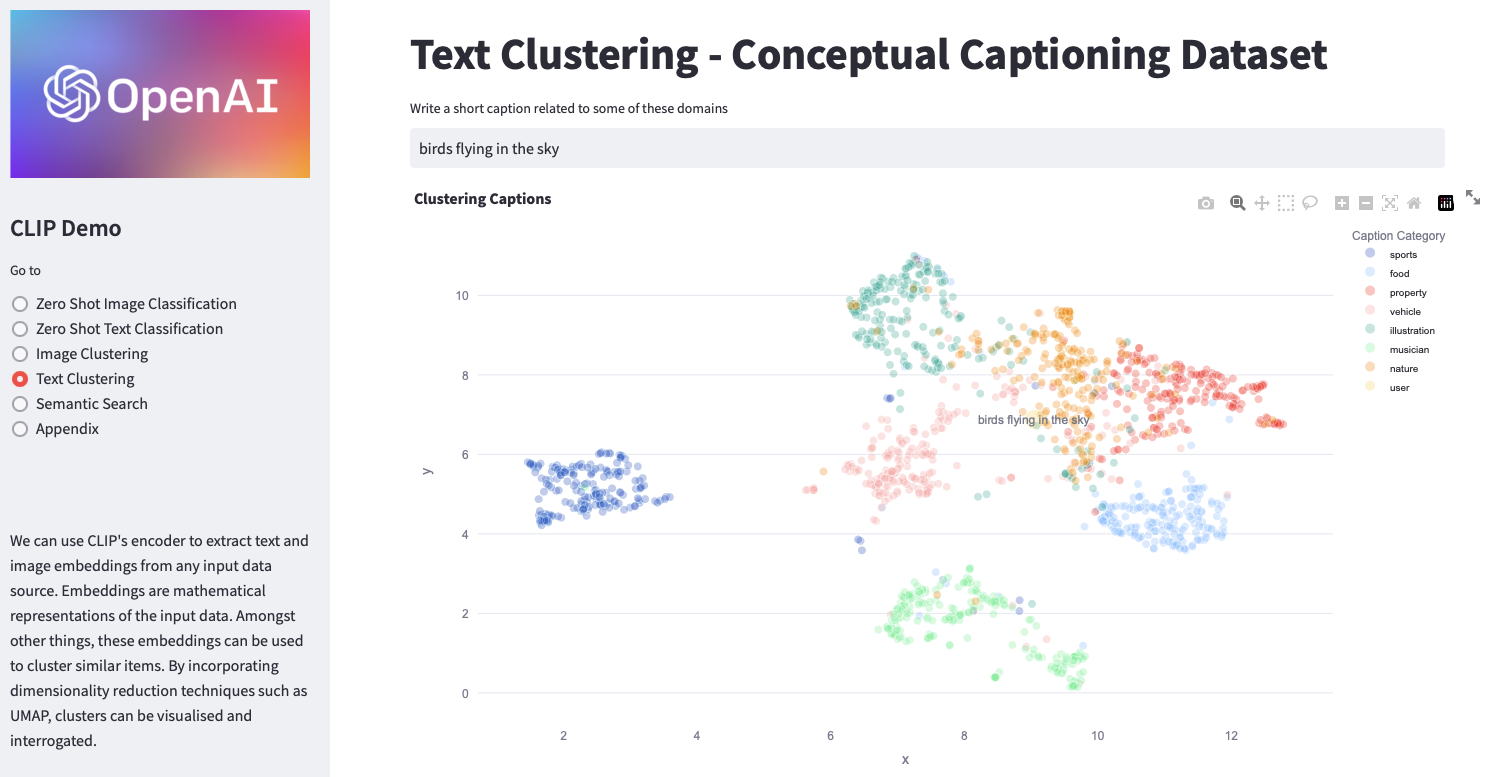This repository contains a streamlit application that demonstrates how to use OpenAI's CLIP model for a variety of natural language and computer vision tasks such as zero-shot classification, image clustering, text clustering, and semantic search.
Deployed App: https://openai-clip-utilities.streamlit.app/
Clone this repository
git clone https://github.com/kitsamho/clip_app
Install the required packages
pip install -r requirements.txt
Note - This app was made using python 3.9.18
Navigate to the cloned directory and launch the Streamlit app with
streamlit run clip_app.py
Use the sidebar navigation menu to choose the task that you would like to explore.
This demo application provides several different sub-apps that allow you to explore the capabilities of OpenAI's CLIP model. These sub-apps include:
This streamlit app allows users to classify images from the Unsplash website using the OpenAI CLIP model. The app presents a random image from unsplash and the user can then enter one or more labels that they think describe the image, and the app will use the CLIP model to generate a list of probabilities for each of the labels.
This app performs text classification on news headlines scraped from the BBC news website. It uses the OpenAI CLIP model to classify the headlines into user-specified labels. The app displays a random headline from a category selected by the user, and the user can input labels for the headline. The app then uses CLIP to classify the headline into those labels, and displays the predicted probabilities for each label. The user can then request a new headline to classify.
The app uses CLIP to generate image embeddings and the UMAP algorithm for dimensionality reduction to visualize the clustering of images. The user can input a URL to an image and the app will calculate its embedding and include it in the clustering. The resulting clusters are displayed as a scatter plot where each point represents an image, and similar images are grouped together.
This app is a text clustering tool that allows the user to input a short caption and see it visualized alongside a pre-existing dataset of text embeddings. The tool uses the UMAP algorithm to reduce the dimensionality of the embeddings and then plots the resulting 2D space with Plotly. The user's input is added to the dataset.
This Streamlit app allows the user to perform semantic search of images using natural language queries. It uses the CLIP (Contrastive Language-Image Pre-Training) model to encode both the images and the natural language queries into embeddings, and then uses cosine similarity to rank the similarity between the query and a list of cached image embeddings. The app allows the user to input a natural language query and displays a grid of images that are most similar to the query, based on their embeddings.
Note that some of these sub-apps require pre-cached embeddings of the relevant data. These are available in the /data directory of this repository.
Around 1250 images were scraped from https://www.rockarchive.com/ and their CLIP embeddings were generated locally. The resulting embeddings were then persisted to a Pandas DataFrame and cached locally for future use.
To create captions for the images, https://ai.google.com/research/ConceptualCaptions/ was used. The captions' CLIP embeddings were also generated locally and pickled in a Pandas DataFrame, which was then cached locally.




